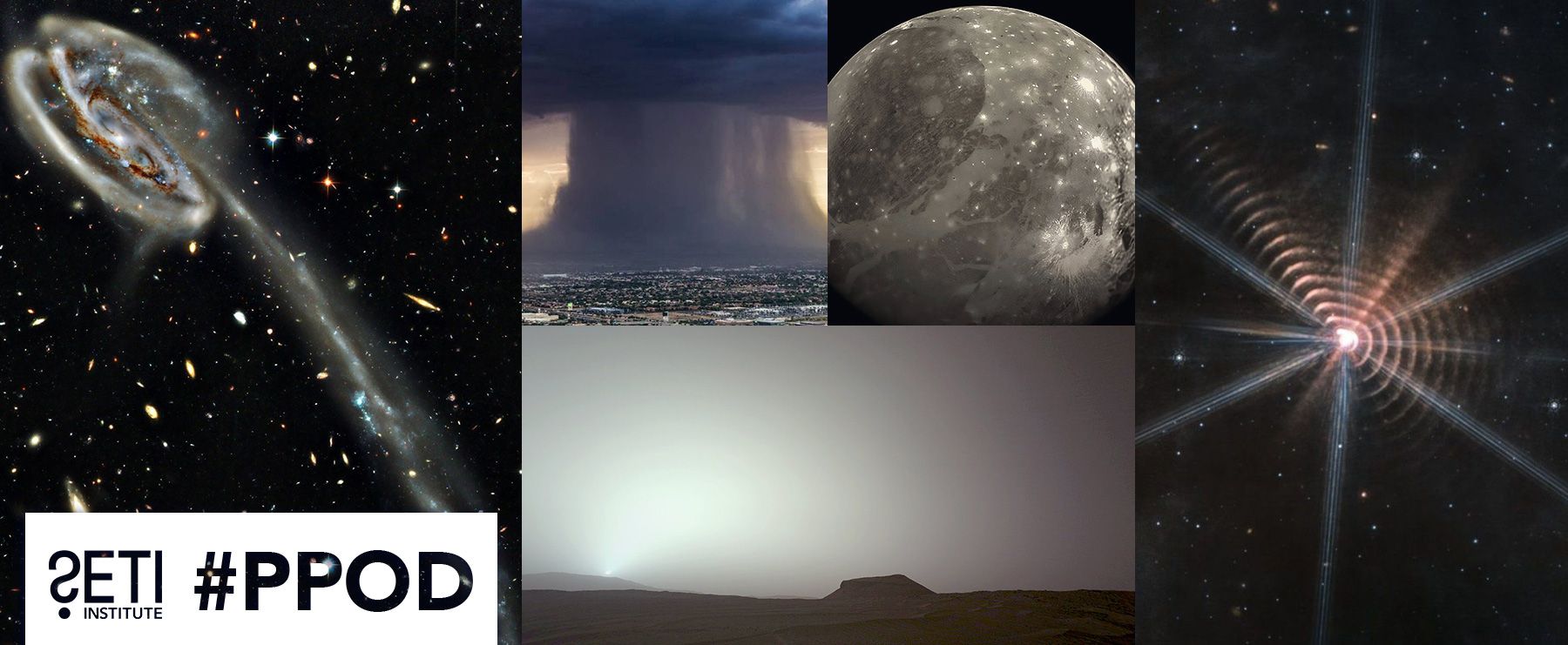
Planetary Picture of the Day
Week of September 5, 2022
This week’s images include sights as seen from the Perseverance rover, Hubble, JWST , Galileo and right here on Earth.
Monday, September 5, 2022
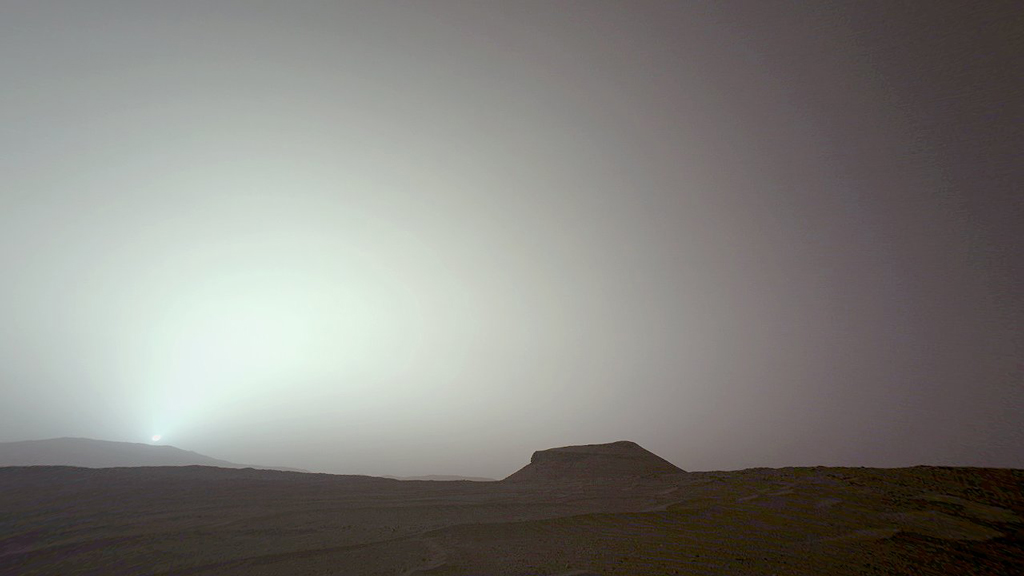
Credit: NASA/JPL-Caltech/Paul Byrne
Sunrise on Mars
This beautiful sunrise at Jezero crater was captured by NASA's Perseverance rover on Saturday morning (September 3, 2022) at around 7:20 am local time.
Tuesday, September 6, 2022
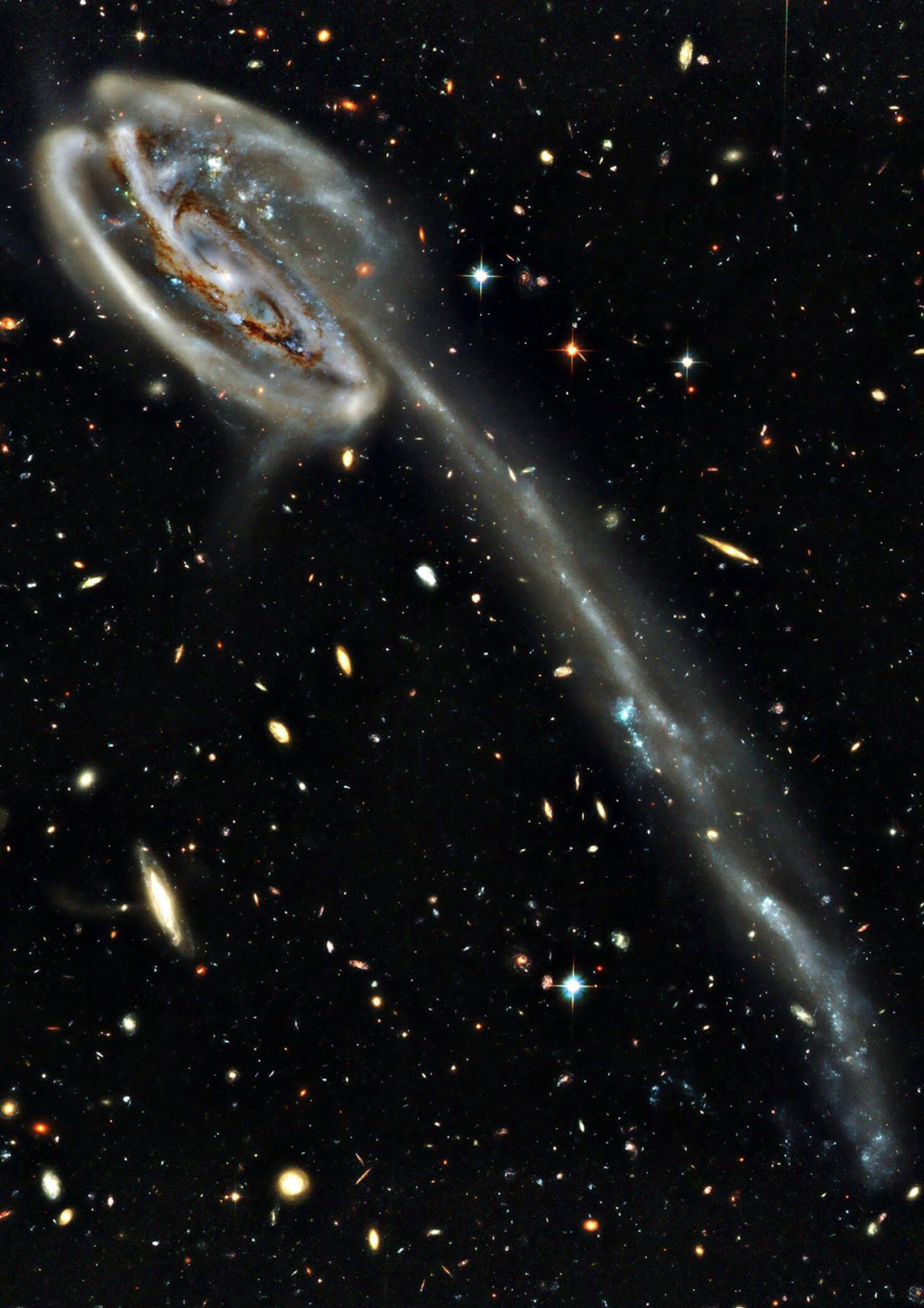
Credit: Hubble Legacy Archive, ESA, NASA; Processing: Amal Biju
The Tadpole Galaxy from Hubble
The Tadpole Galaxy is a disrupted barred spiral galaxy located 420 million light-years from Earth in the northern constellation Draco. Its most dramatic feature is a trail of stars about 280,000 light-years long. Its size has been attributed to a merger with a smaller galaxy that is believed to have occurred about 100 million years ago. It is filled with bright blue star clusters. This galaxy is the largest disrupted spiral galaxy of its sort.
Wednesday, September 7, 2022
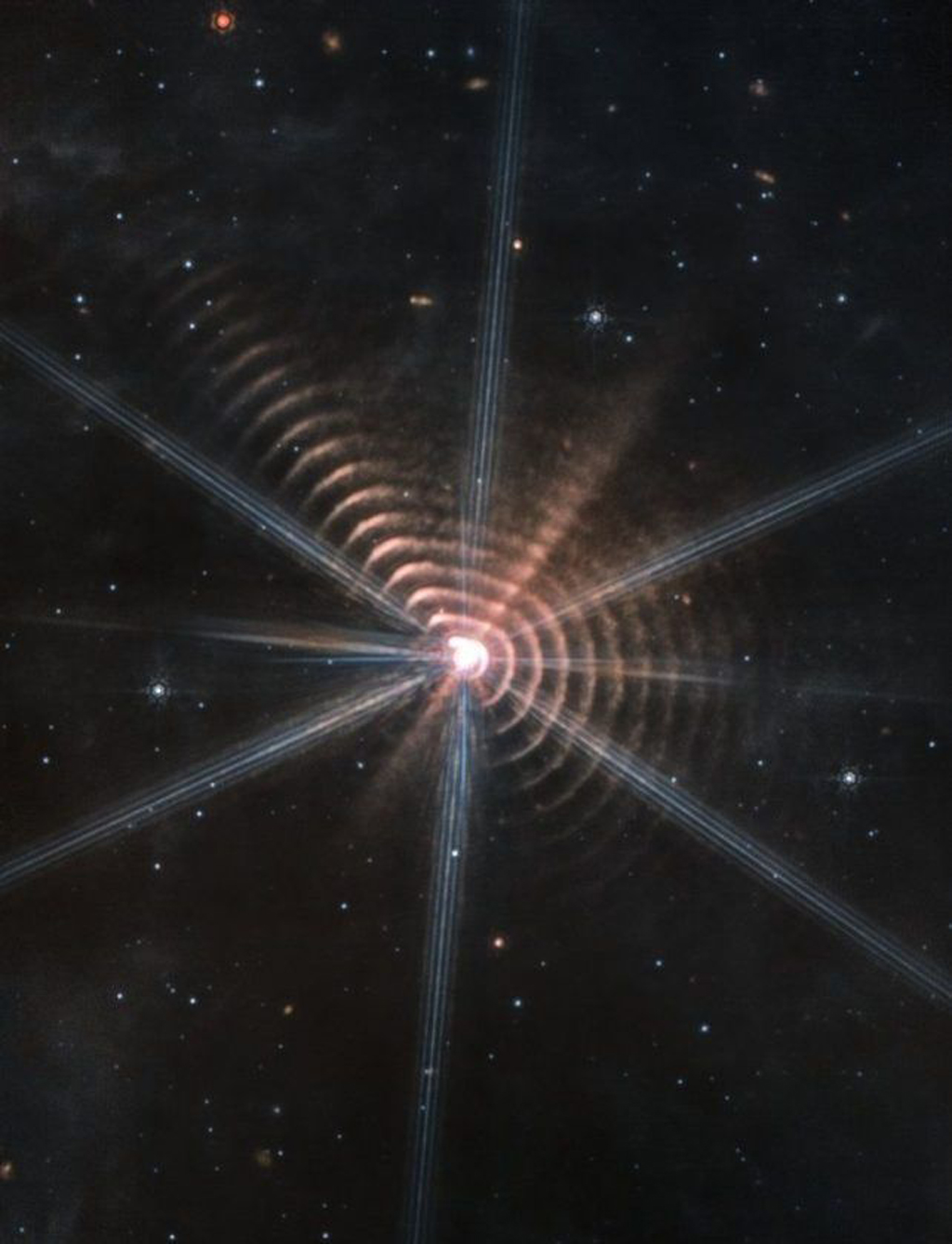
Credit: NASA, ESA, CSA, and STScI / Judy Schmidt
Extraordinary Phenomenon in Space
The Universe, truly, is full of wonders, and the James Webb Space Telescope has just given us our best views of one of them yet. The object in question is a star around 5,600 light-years away, and Webb's infrared eye has picked out an extraordinary detail: it's surrounded by what appear to be concentric rings of light radiating outward. While Webb's characteristic diffraction spikes are not 'real', those concentric rings are – and there's a wonderful and fascinating explanation for them.
The star is actually a binary pair of rare stars in the constellation of Cygnus, and their interactions produce precise periodic eruptions of dust that are expanding out in shells into the space around the pair over time. These shells of dust are glowing in infrared, which has allowed an instrument as sensitive as Webb's MIRI to resolve them in exquisite detail.
Thursday, September 8, 2022
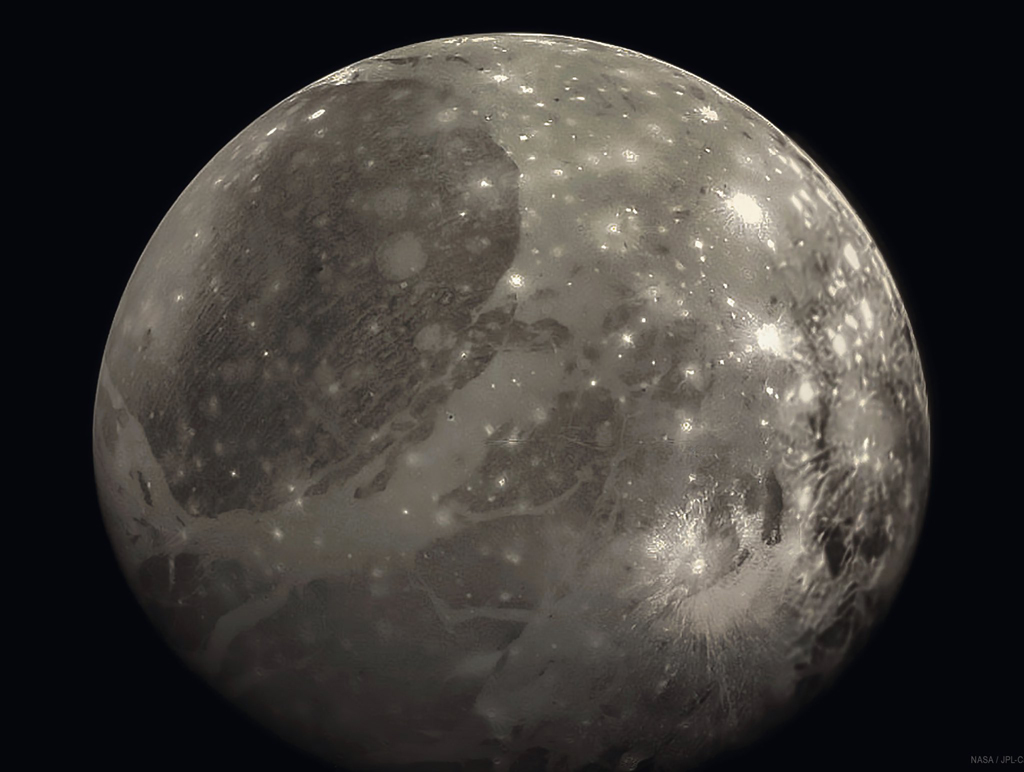
Credit: NASA/JPL-Caltech/Jason Major
Ganymede by Galileo
A view of Jupiter's largest moon Ganymede assembled from image data captured by NASA's Galileo spacecraft on June 25, 1996.
Friday, September 9, 2022
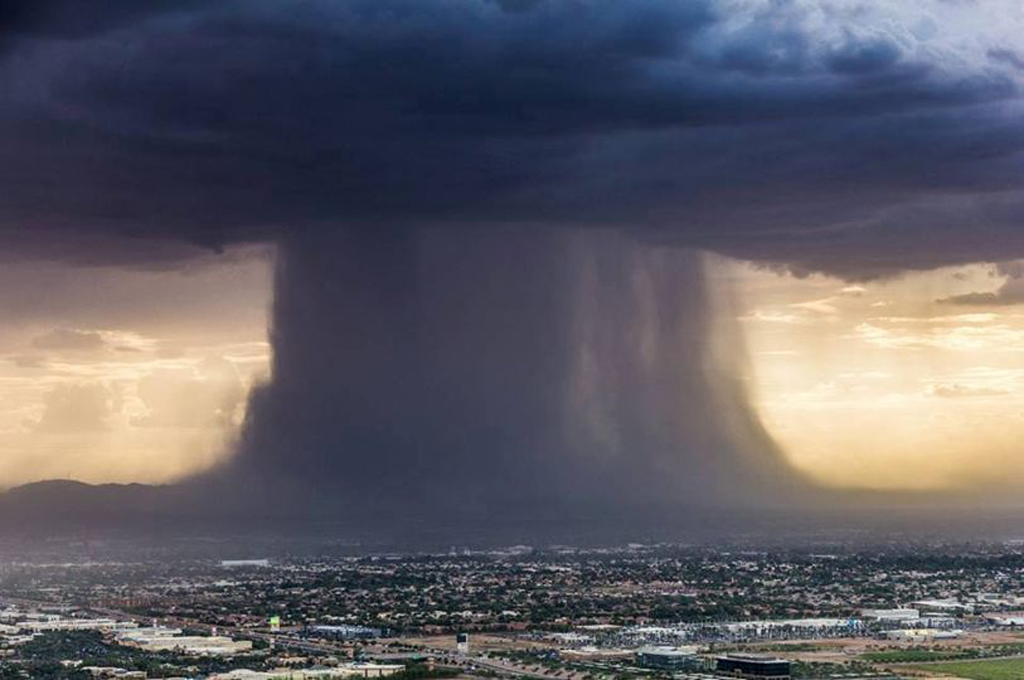
Credit: Bruce Haffner/Andrew Park/Jerry Ferguson
Microburst in Action
A thunderstorm unleashes a microburst over Phoenix, Arizona on July 18, 2016. Taken from a news helicopter.





